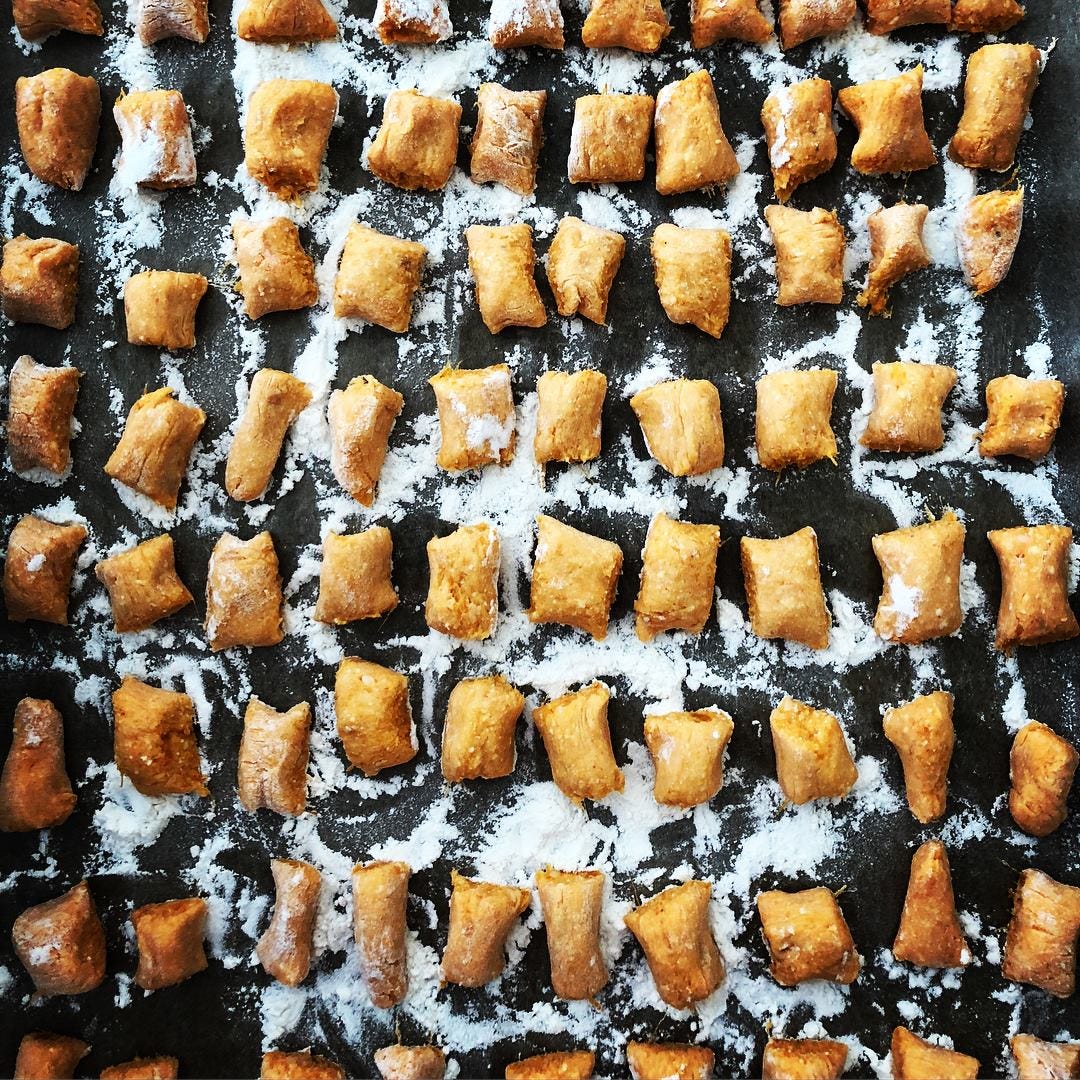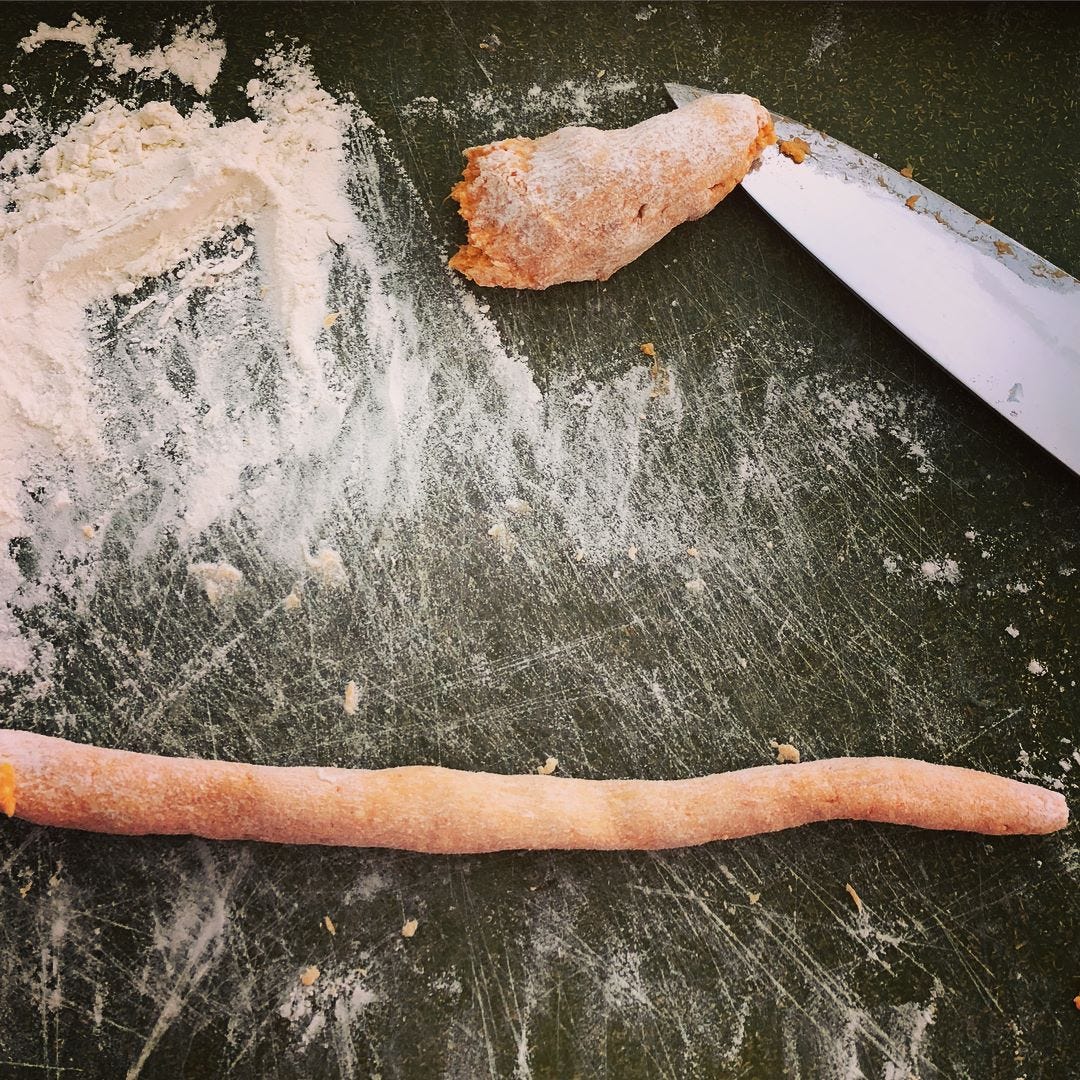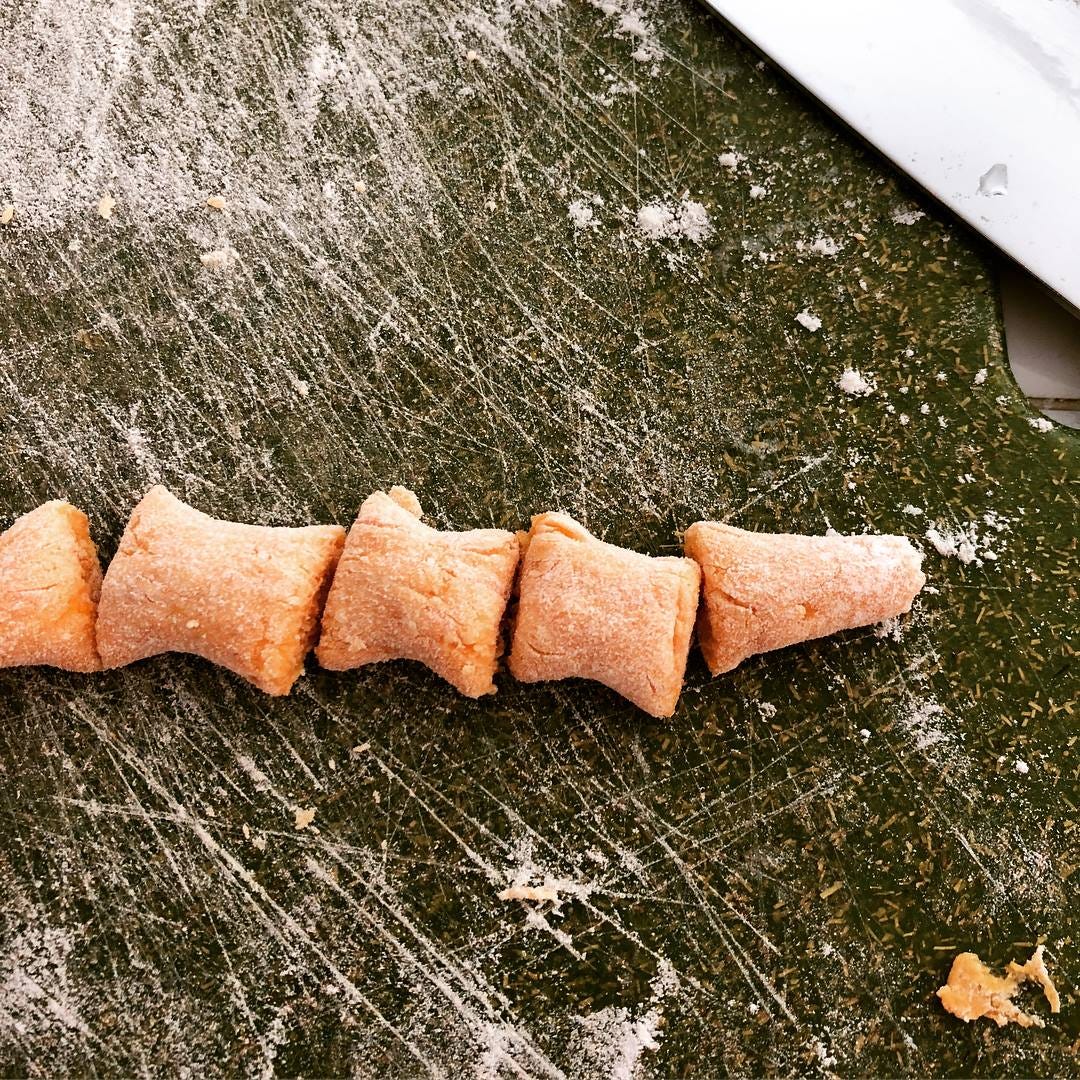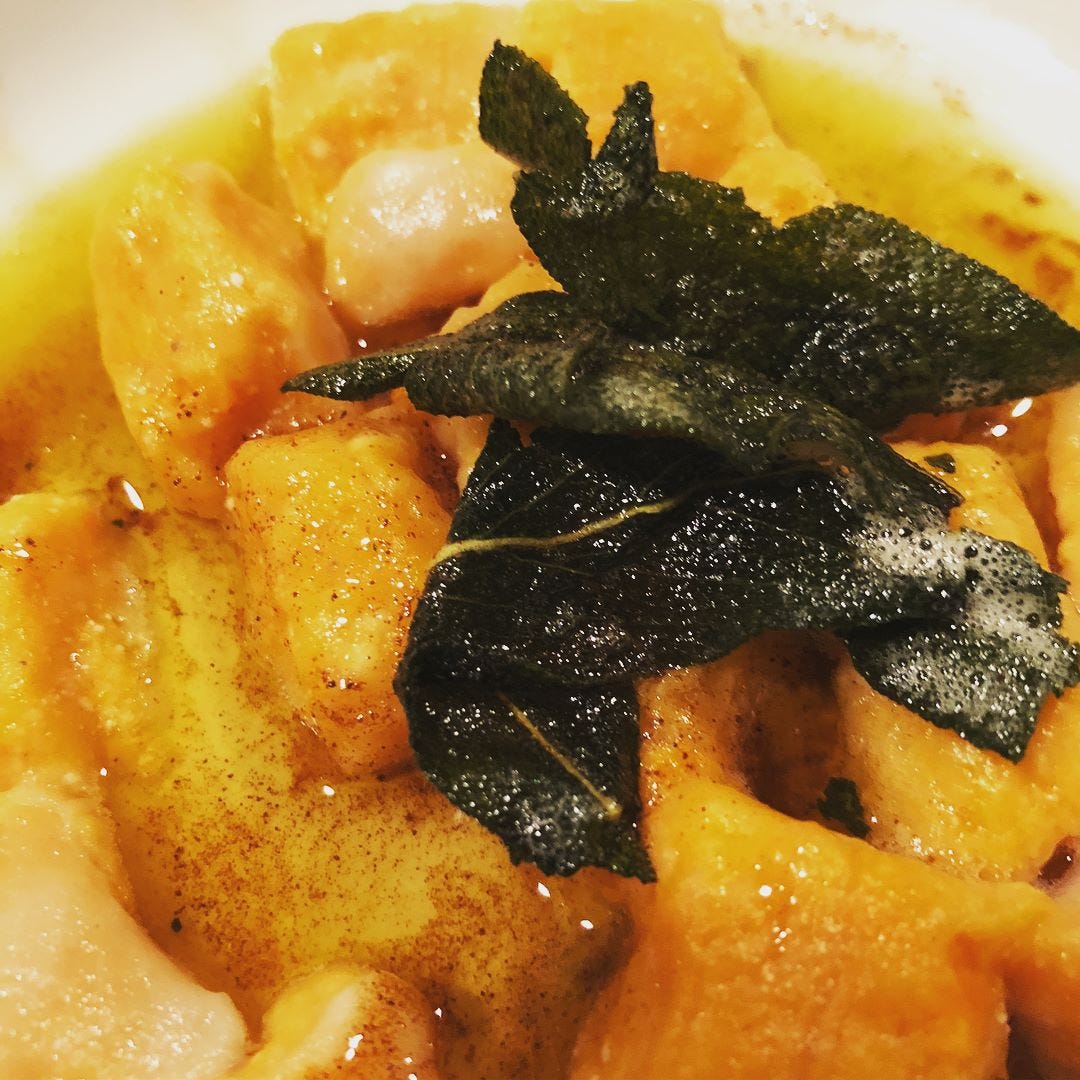
I want to say something that may sound lazy, may sound radical: recipes are mere suggestions. If the last two years of politics have taught us anything, it’s that no two of us agree on everything. (Unless you still think of yourself as a Republican, in which case you vote and think as part of a cozy Borg-like monolith despite your own best interests.)
Tastes vary. And even if Escoffier himself wrote this recipe, you may not like it. You may wish for less salt or more pepper. You may find a way of doing something that saves you time, or cooks it crispier to your liking. I, for one, refuse to believe bay leaf has any discernible value in a soup or stew, despite the number of prominent chefs who tell me to use it. I have thus abandoned using bay leaf in anything and save myself the money.
I say all of this before giving you my “recipe” for sweet potato gnocchi, because I urge you to use it as a guideline. If you like this, super! But you may find you want more salt or cheese. You may want to avoid cheese altogether. Gnocchi, like so much of our great food, was peasant food. So it was made from whatever people had on hand. Growing up, my grandmother and great, great aunts always used potato and flour. I had another friend whose family always used flour and ricotta. By its very nature it’s an imprecise recipe so do what you like. After all, you’re the one who has to eat it.
(Normally the recipes would only be included as part of the paid subscription fee, but I’m including these for free until November 15th to get us through the mid-terms!)
SWEET POTATO GNOCCHI
Makes approximately 150 gnocchi
1 - 1lb sweet potato
½ cup ricotta
¼ cup of grated pecorino cheese
2/3 cup flour
1 tsp salt
Peel and cut your sweet potato up into chunks, approximately 2 ½ inches square. Boil in a pot of salted water for 20-25 minutes, until easily pierced with a fork.
Mash the sweet potato in a bowl. Then mix in the other ingredients. The dough should be a soft consistency. The goal is to get gnocchi that are a soft, light texture, not a hard dumpling. (However if you like hard dumplings, feel free to add more flour. See above.)

Roll out your gnocchi. There are many ways to do this of varying difficulty that involve things like forks and special techniques. I like to keep it simple. I flour a cutting board and then take a small ball of dough, roll it in flour, and then roll it between the board and my two hands into a long thin rope about an inch thick. I then cut it into dumplings, roughly an inch and half long. Place finished gnocchi on floured parchment paper on a cookie sheet.

To cook, place gnocchi into boiling water. Gnocchi are finished when they rise to the top. Don’t strain. The dumpling is too soft. I made that mistake and a few of them smashed and broke apart into a delightful mush. Instead, remove with a slotted spoon. Serve with brown butter sage.
BROWN BUTTER SAGE
I almost forgot the best part of sweet potato gnocchi!
You’re going to want 1-2 Tablespoons of butter and 3 or 4 sage leaves per serving.
Melt butter in pan over low-medium heat. Once completely melted, add sage and stir butter as it starts to bubble. You don’t want to burn it, so keep the heat low, and keep a careful eye on it. Once the butter starts to turn a coppery color, usually after about 4 or 5 minutes, take off the heat. Spoon ever gnocchi and serve while hot.



Brown Butter Sage is so simple and so delicious, it is now my go to sauce to accompany pasta. It’s Fall in a bowl. It’s savory and creamy and light and perfectly complemented the ravioli I made.